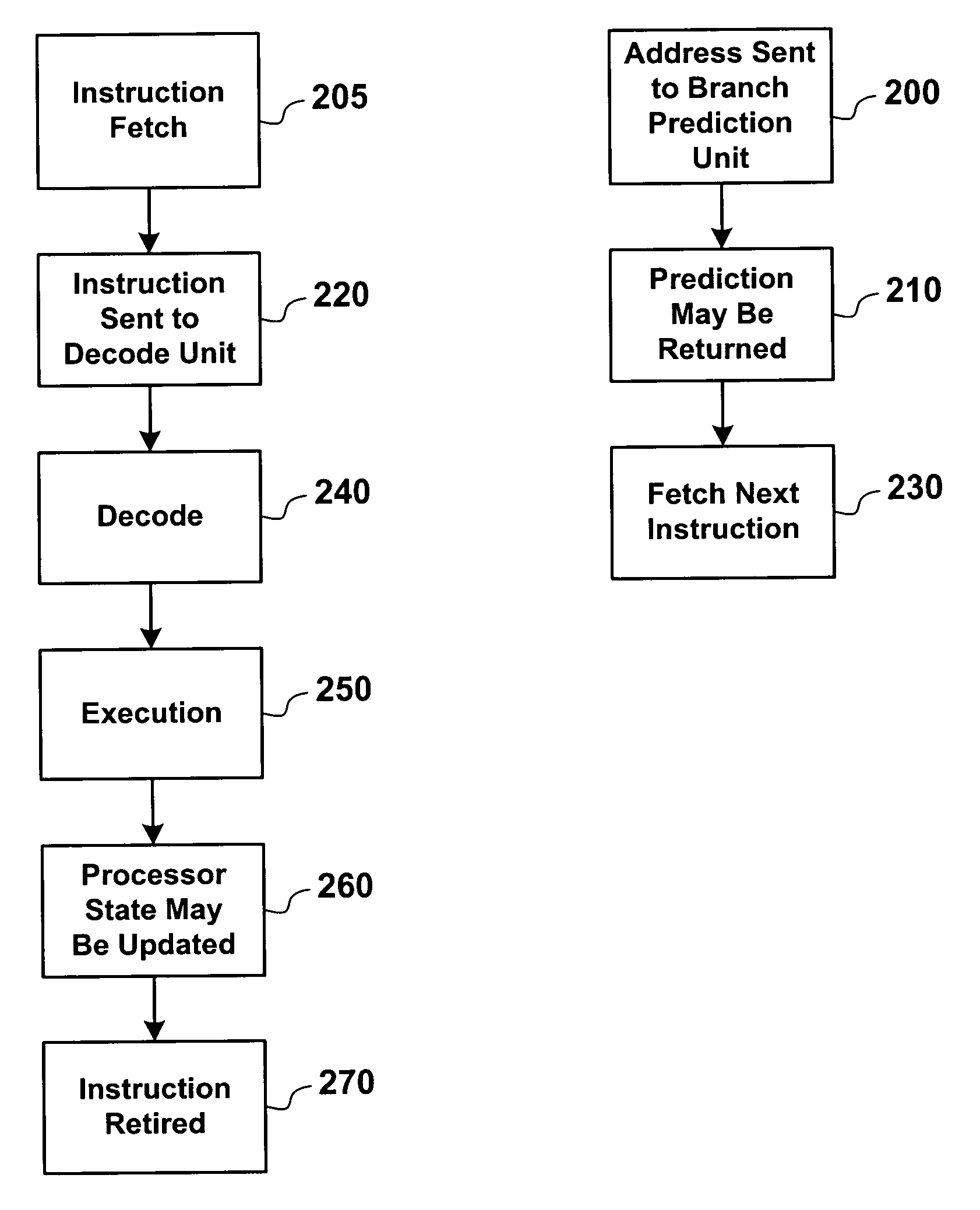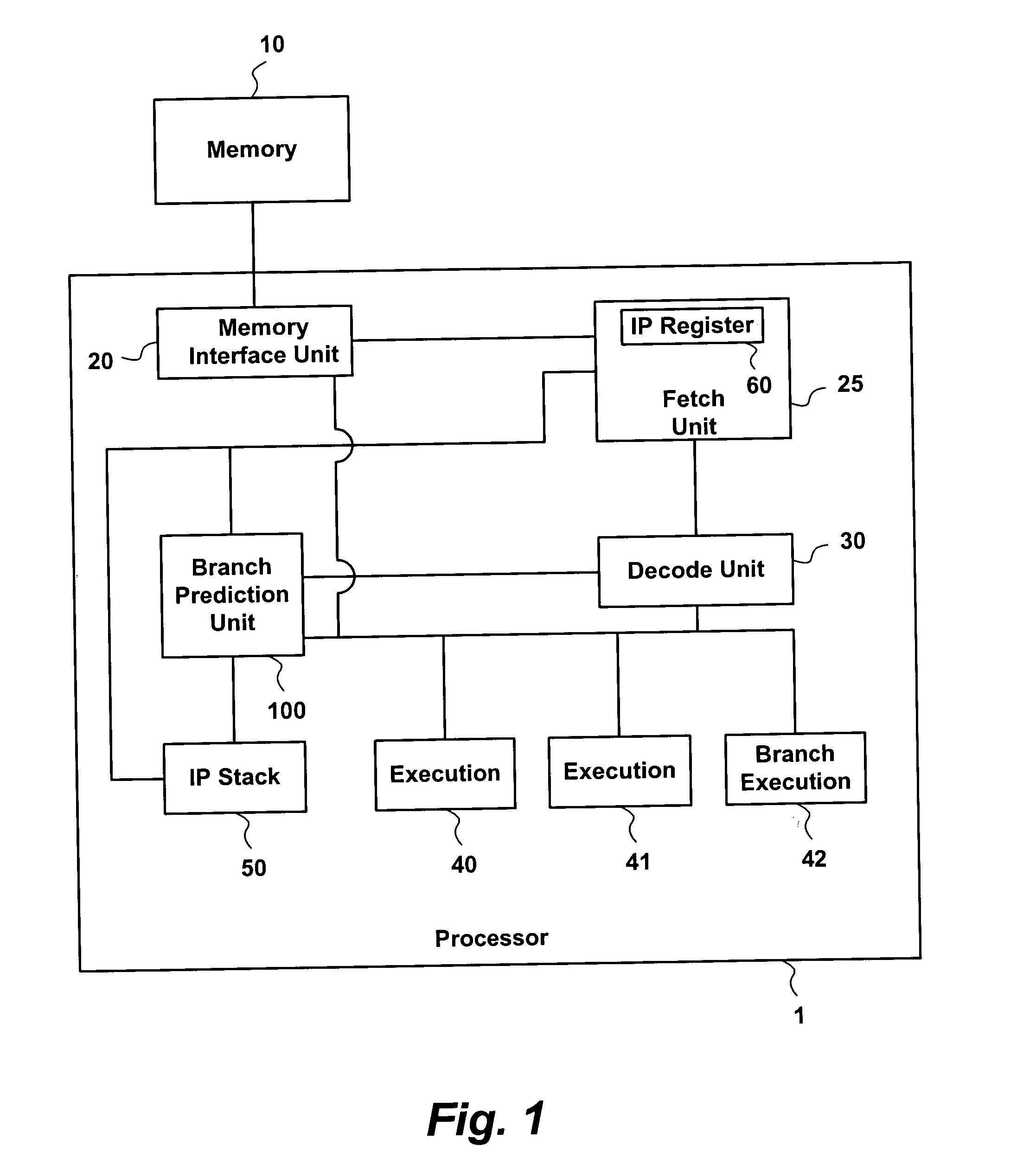Method and system for branch target prediction using path information
a path information and target prediction technology, applied in the field of computer systems, can solve the problems of wasting time, wasting processing effort, and each stage of the pipeline to be idle for a period of time, and the branch prediction mechanism is only worthwhil
- Summary
- Abstract
- Description
- Claims
- Application Information
AI Technical Summary
Benefits of technology
Problems solved by technology
Method used
Image
Examples
Embodiment Construction
[0021] I. Overview
[0022] The system and method of the present invention allow for more accurate branch target prediction using a minimum of system resources. In an exemplary embodiment of the present invention, a branch prediction unit provides branch target predictions based on the instruction pointer (“IP”) of a branch instruction. The branch prediction unit comprises a BTB, an indirect target buffer (“ITB”) and a PIR The BTB and ITB store predicted target addresses and the PIR stores path history. The PIR is used, in combination with a branch address, to index the ITB. On each instruction fetch both the BTB and ITB are accessed in parallel, and, if either hit, the provided target or targets may be used to predict the target of a branch address.
[0023] The PIR provides an efficient way to accurately record the path history. When combined with a portion of the branch address to form an index for the ITB, the PIR allows for different predictions to be made for the same indirect bra...
PUM
 Login to View More
Login to View More Abstract
Description
Claims
Application Information
 Login to View More
Login to View More - R&D
- Intellectual Property
- Life Sciences
- Materials
- Tech Scout
- Unparalleled Data Quality
- Higher Quality Content
- 60% Fewer Hallucinations
Browse by: Latest US Patents, China's latest patents, Technical Efficacy Thesaurus, Application Domain, Technology Topic, Popular Technical Reports.
© 2025 PatSnap. All rights reserved.Legal|Privacy policy|Modern Slavery Act Transparency Statement|Sitemap|About US| Contact US: help@patsnap.com



